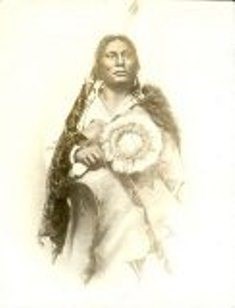
Gall was born in 1840 along the Moreau River west of the Missouri River in present day South Dakota. He was a member of the Hunkpapa Lakota, along with Sitting Bull. Physically powerful, Gall proved himself early in battle and in the hunt. He gradually became the favorite protégé of Sitting Bull. Gall initially fought the whites at the Battle of Killdeer Mountain (1864) in present day North Dakota. Later, near Fort Berthold in late 1865, Gall was surrounded, bayoneted and left for dead by soldiers led to his camp by the Arikara scout, Bloody Knife. Bloody Knife was kept from shooting Gall's prostrate body by the commanding officer. Gall survived. In the summer of 1872, Gall and Sitting Bull led attacks against the military escort of Northern Pacific Railroad survey parties across southeastern Montana. The following summer, Gall again led resistance to a second Northern Pacific survey. This time Custer's 7th Cavalry served as escort. Custer's initial fights with northern Plains Indians took place during the 1873 railroad survey. As a result of the Government ultimatum in December 1875 to come into the reservation or else, Gall led his band from Standing Rock Agency to join Sitting Bull's non-treaty Lakota. At the Battle of the Little Bighorn, several members of Gall's family, two wives and three children, were killed in Reno's assault on the south end of the village. Gall apparently did not participate in the attack on Reno's retreating troops, but did cross with warriors at Medicine Tail Coulee to first stop and then assault Custer's battalion. He actively participated in the final demise of Custer's battalion. During the fall and winter of 1876-1877 Sitting Bull's people were constantly harassed by General Miles 5th Infantry. In the spring of 1877, Gall joined Sitting Bull in crossing over to the Wood Mountain area of Canada in what is today southern Alberta. As the exiled Lakota began to starve, Gall broke with Sitting Bull and returned with a large number of his people to Fort Buford in January 1881. After more defections, Sitting Bull brought the rest of his people into Fort Buford to surrender July 19, 1881. Gall sided with Standing Rock Indian Agent James McLaughlin in his attempts to get the Lakota to adopt an agrarian life style. He became a leader of the progressive element of the tribe versus the traditionalists who resisted the new ways led by Sitting Bull. Gall died in present day South Dakota on the Standing Rock Indian Reservation, December 5, 1894. |
Last updated: April 23, 2025
